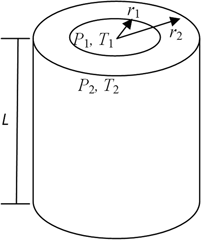Article contents
Thermal mechanical behavior of a functionally graded shape memory alloy cylinder subject to pressure and graded temperature loads
Published online by Cambridge University Press: 15 May 2018
Abstract

As a new functional composite material, functionally graded shape memory alloy (FG-SMA) holds particular properties of both functionally graded materials and shape memory alloys. By bringing in a new concept of conical surface assumption, considering the axial deformation, a macroconstitutive model which can describe the thermal mechanical properties of a FG-SMA cylinder subjected to pressure and graded temperature loads is established in this work. Furthermore, a new layered finite element model (FEM) which can avoid the direct assumption of the macroproperties of the FG-SMA cylinder is provided. The theoretical results display a good agreement with the FEM results, which indicates that both the macroconstitutive model and the FEM provided here are valid. The obtained results show that the stress in the cylinder distributes complexly, and it decreases remarkably as a result of the martensite transformation. This research can provide a base for the design and in-depth investigation of FG-SMA materials.
Keywords
- Type
- Article
- Information
- Copyright
- Copyright © Materials Research Society 2018
References
REFERENCES
- 4
- Cited by



